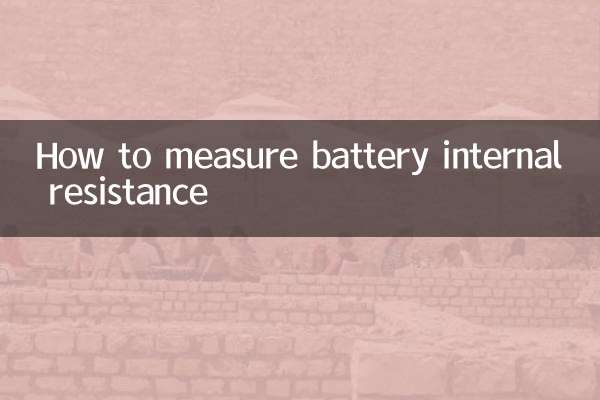How to install audio amplifier
In a home theater or music enthusiast's system, the installation of audio amplifiers is a crucial part. Proper installation not only improves sound quality, but also extends the life of your equipment. This article will introduce in detail the installation steps, precautions and FAQs of the audio amplifier to help you complete the installation easily.
1. Preparations before installation

Before installing the audio amplifier, you need to make the following preparations:
| Project | Description |
|---|---|
| Choose the right amplifier | Match the amplifier to the speaker's power and impedance to avoid underpowering or overloading. |
| Check supply voltage | Make sure the power supply voltage is consistent with the rated voltage of the amplifier, usually 220V. |
| Preparation tools | Screwdriver, audio cable, power cord, multimeter (optional), etc. |
| Determine the installation location | Choose a well-ventilated location away from direct sunlight and away from heat sources and moisture. |
2. Audio amplifier installation steps
The following are detailed installation steps:
| steps | Operating Instructions |
|---|---|
| 1. Connect the audio source device | Use RCA or optical fiber cables to connect the amplifier to the player (such as CD player, TV). |
| 2. Connect speakers | Use the speaker cable to connect the power amplifier to the speaker, paying attention to the positive and negative poles (red is positive, black is negative). |
| 3. Turn on the power | Plug the amplifier power cord into the outlet and make sure the power switch is off. |
| 4. Start-up and debugging | Turn on the audio source device first, then the power amplifier, and gradually adjust the volume to an appropriate level. |
| 5. Check the sound quality | Play test music to make sure there is no noise, distortion, or imbalance between the left and right channels. |
3. Installation precautions
To avoid problems during installation, please note the following points:
| Things to note | Description |
|---|---|
| avoid short circuit | Do not let the exposed part of the speaker cable touch metal to prevent short circuit damage to the amplifier. |
| Heat dissipation problem | The amplifier will generate heat when it is working, so make sure there is enough space around it for heat dissipation. |
| Grounding treatment | If there is a current sound, check whether the power amplifier and audio source equipment are well grounded. |
| avoid overload | Do not play at maximum volume for a long time to avoid overloading the amplifier and burning it. |
4. Frequently Asked Questions
The following are some common problems encountered by users during the installation process and their solutions:
| question | Solution |
|---|---|
| No sound from amplifier | Check whether the audio source connection and speaker cable are connected properly, and confirm that the power amplifier is turned on. |
| There is electric current or noise | Check whether the grounding is good, or try to replace the audio cable. |
| Amplifier overheated | Reduce the volume, improve the ventilation environment, or add a cooling fan. |
| Left and right channels are unbalanced | Check the speaker cable connections, or adjust the amplifier's balance settings. |
5. Summary
The installation of audio amplifiers is not complicated, but you need to pay attention to details, such as matching power, correct wiring and heat dissipation. With the guidance in this article, you can easily complete the installation and enjoy a high-quality music experience. If you encounter a problem that cannot be solved, it is recommended to contact professional technicians for debugging.
Hope this article helps you! If you have other questions, please leave a message in the comment area for discussion.

check the details

check the details